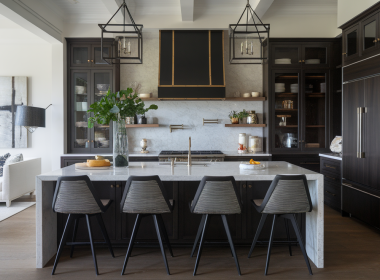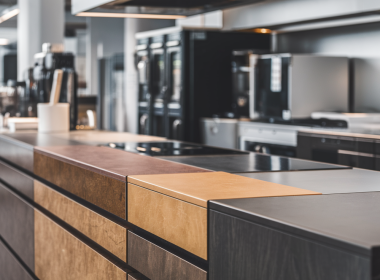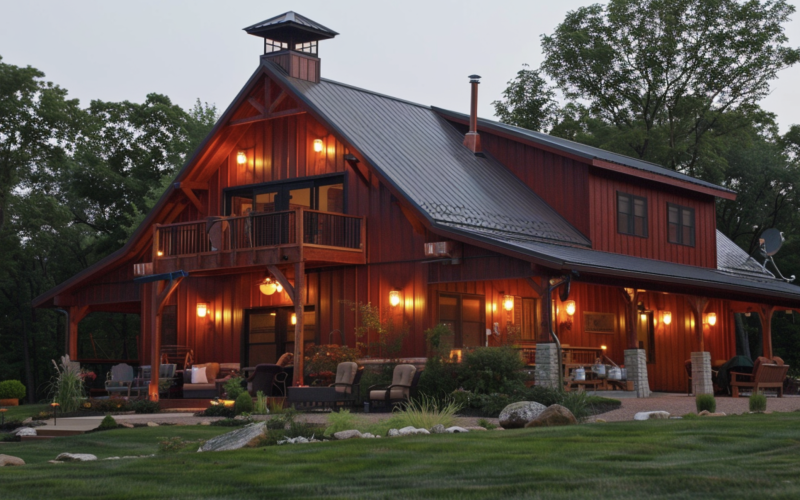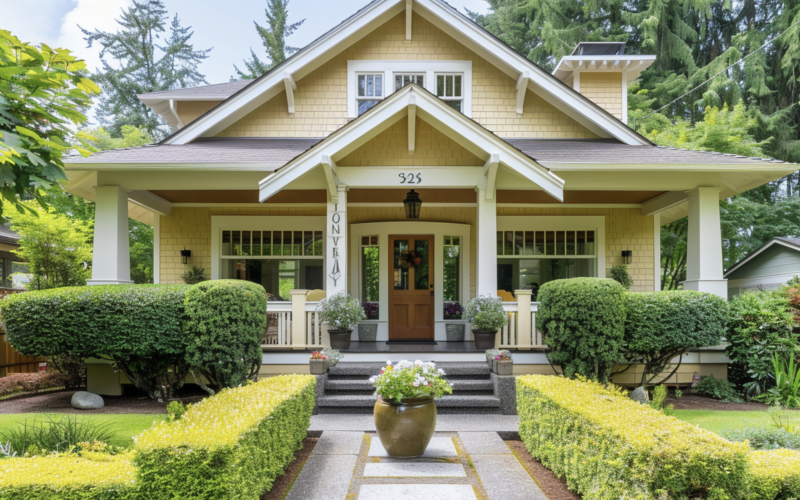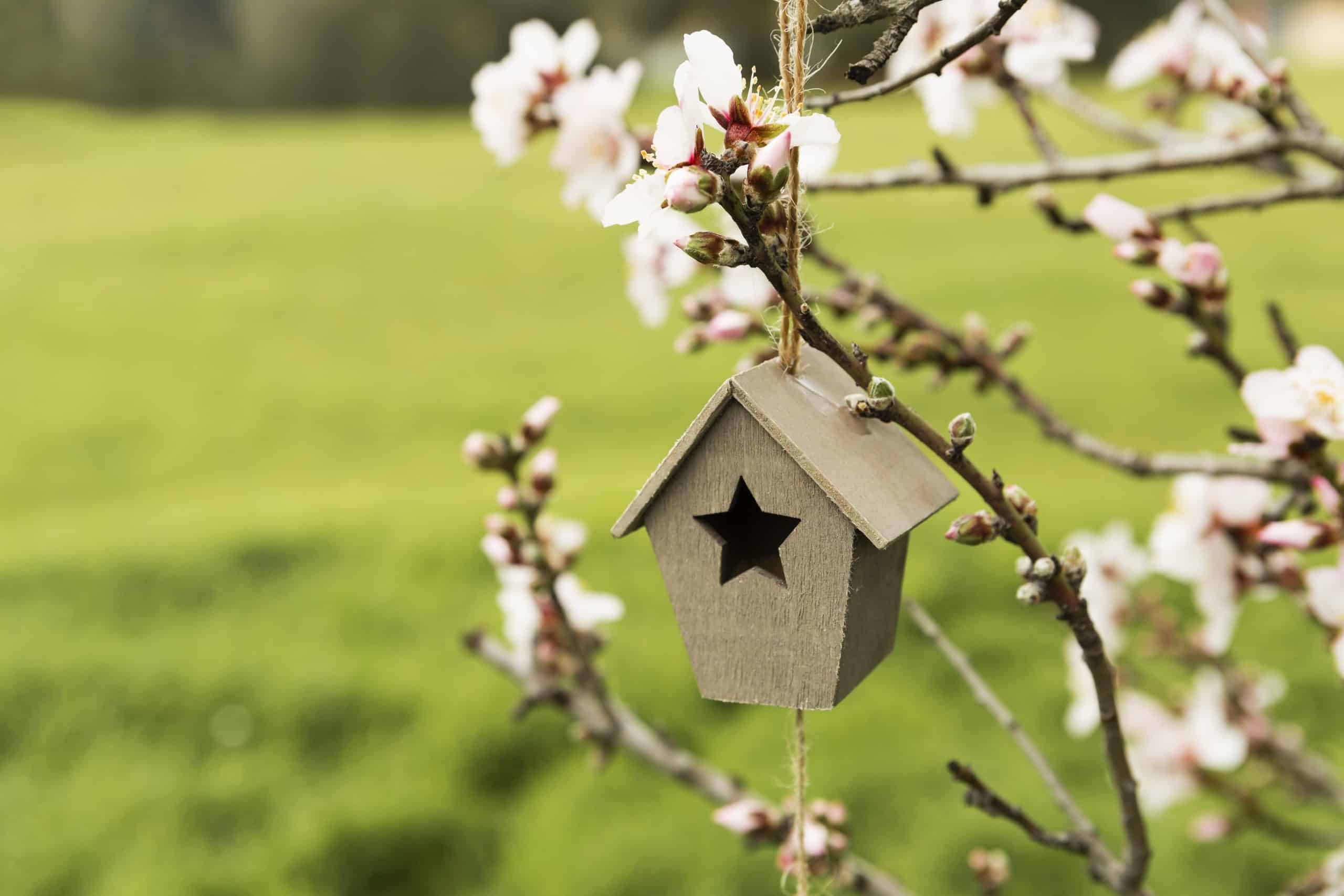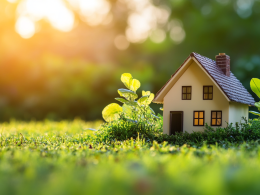Choosing the right materials for a barn can be challenging. Many farm owners struggle with this decision, weighing factors like cost, durability, and appearance.
If you’re considering simple pole barn plans or other options, you’re not alone in feeling unsure. But don’t worry – I’m here to help make your choice easier.
In this post, I’ll discuss the pros and cons of different barn-building materials. We’ll look at wood, metal, and concrete, exploring how each holds up in various climates and farm settings.
You’ll know which material might work best for your barn by the end. Whether you’re housing horses or storing hay, you’ll find the information you need to make a smart choice.
Let’s dig in and find the perfect fit for your farm!
Building Material for a Barn
1. Wood
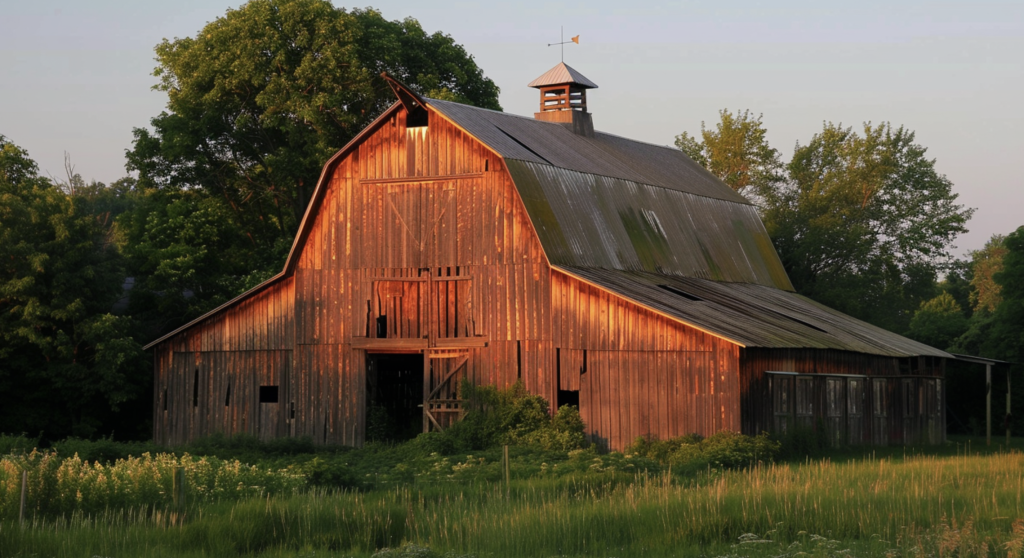
Wood is a classic choice for barns, and I can see why many farm owners love it. Let’s talk about why it might work for you.
Advantages of Wood
Wood barns look great, don’t they? They have that cozy, traditional feel that many of us picture when we think of a barn. But it’s not just about looks.
Wood is also a natural insulator, which can help keep your barn warmer in winter and cooler in summer. Plus, if you’ve got animals in there, they’ll enjoy a quieter space since wood doesn’t echo like other materials.
Disadvantages of Wood
Wood isn’t perfect. It can rot over time, especially if you live in a wet area. You’ll need to keep an eye on it and maybe repaint or restore it every few years. Bugs and other pests can also be a problem—they love wood as much as we do!
Usage of Wood
I see wood used a lot in traditional barn designs. Wood might be your best bet if you’re going for that classic farm look. It’s great for smaller barns or if you’re in an area with mild weather.
2. Metal
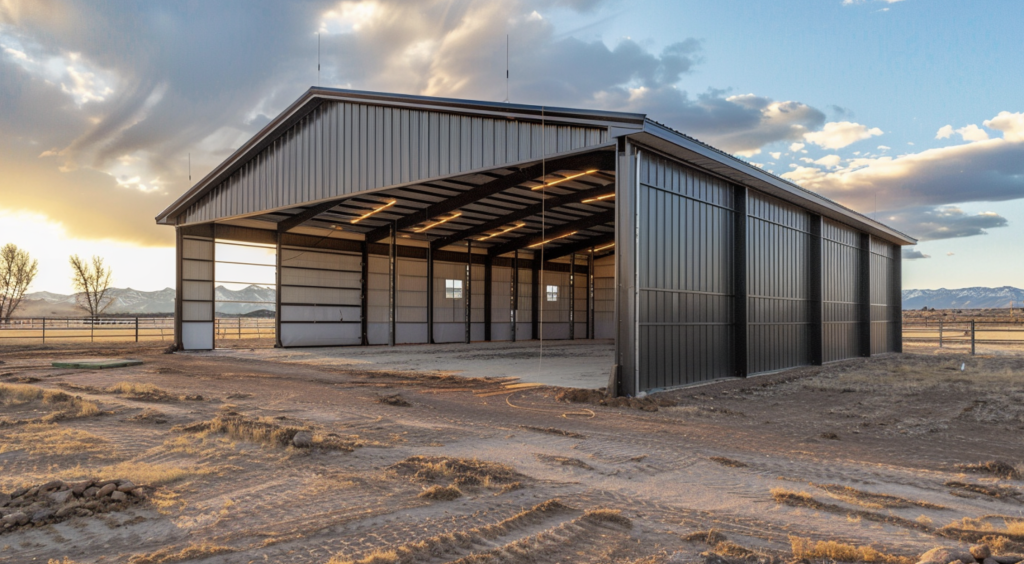
Metal barns are becoming more common, and they have some big pluses. Here’s what you should know:
Advantages of Metal
Metal is tough stuff. It can stand up to harsh weather and won’t rot like wood. You won’t have to spend much time or money on upkeep, which is nice. And if you’re watching your budget, metal can be a good choice – it’s often cheaper than wood or brick.
Disadvantages of Metal
Metal does have some downsides. It can be noisy when it rains or hails, which might bother your animals. It’s not as good at keeping heat in or out as wood, so your barn might get pretty hot in summer or cold in winter.
Also, if it’s not put together right, sharp edges could hurt your animals.
Usage of Metal
I’m seeing more and more metal barns these days, especially on bigger farms. They’re great if you want something that will last long without much care.
They work well in most climates, but you might want to add extra insulation if you live in extreme temperatures.
3. Concrete and Brick
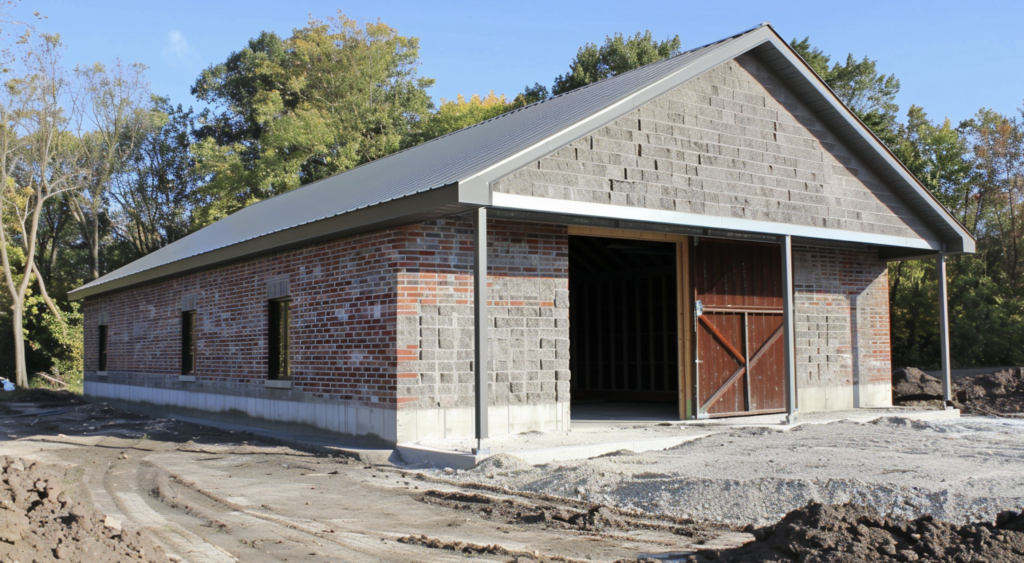
Concrete and brick barns are less common but have some unique benefits. Let’s take a look:
Advantages of Concrete and Brick
These materials are super strong and can last for ages. You won’t have to worry about rot or pests; they need little upkeep. They’re also great at stopping fires, which can be a big plus if you live in a dry area prone to wildfires.
Disadvantages of Concrete and Brick
The biggest drawback is that concrete and brick barns can be expensive. They can also hold onto heat, which might make your barn too warm in hot weather. And once they’re built, it’s not easy to change or move them.
Usage of Concrete and Brick
I mostly see concrete and brick barns in places where fire is a big concern. They’re also good if you want a barn that will stand for many years with little maintenance. But remember, they’re a big investment upfront.
Detailed Comparison of These Materials
Here is a comparative table based on the provided information:
| Criteria | Wood | Metal | Concrete/Brick |
|---|---|---|---|
| Cost | High initial cost due to expensive materials and labor | Lower initial cost, cheaper materials, and faster construction | Highest initial cost; costly materials and labor |
| Worth it for the aesthetic appeal | Savings on labor and long-term maintenance | Low maintenance costs over time | |
| Durability and Maintenance | Requires regular maintenance (painting, staining) | Low maintenance; durable against weather and bugs | Very durable; minimal maintenance required |
| Prone to rot, insects, and weather damage | Can last 30+ years without repainting | Long-lasting, can withstand severe weather | |
| Safety and Comfort | Prone to fire, but special treatments available | Fire-resistant but needs extra insulation | Highly fire-resistant, maintains steady temperatures |
| Natural insulator; keeps stable temperatures | Noisy during rain/hail; requires proper construction for comfort | May need ventilation for summer comfort | |
| Aesthetic and Customization | Classic barn look; highly customizable | Modern look; limited customization options | Solid appearance; can add decorative elements |
| Options for painting, carving, or natural finish | A variety of colors and styles are available | Decorative brickwork or painted concrete is possible | |
| Construction Time | Long construction time; careful fitting and treatment required | Short construction time; pre-made pieces fit together easily | Longest construction time; concrete drying and brick laying take time |
| Quick assembly | Requires patience and hard work |
Conclusion
After looking at wood, metal, and concrete/brick, it’s clear that each material has its strengths.
Wood offers that classic barn look and natural insulation. Metal is quick to build and needs less upkeep. Concrete and brick are tough as nails and great for fire safety.
But here’s the thing—there’s no one-size-fits-all answer. The best material for your barn depends on your specific needs. Consider your budget, how much time you can spend on maintenance, and the weather you deal with.
Don’t forget to consider your local building codes and what materials are easy to get in your area. It might help to talk to other barn owners or a local builder to get their take.
Ultimately, the best barn keeps your animals safe and comfortable and fits your farm’s needs.
Frequently Asked Questions
Can I Combine Different Materials in My Barn Construction?
Yes, you can mix materials in your barn. Many farmers use wood frames with metal siding or concrete foundations with wooden walls. This can give you the best of each material.
Are There Any Eco-Friendly Options for Barn-Building Materials?
Yes, there are eco-friendly barn options. You can use reclaimed wood, recycled metal, or straw bales. Some people also use earth materials like cob or rammed earth for walls.
Which Material Is Best if I Want to Expand My Barn in The Future?
Metal barns are easiest to expand. They’re lightweight and come in pre-made parts, making additions simpler. Wood can work, too, but it might need more planning. Concrete or brick expansions are trickier and costlier.


